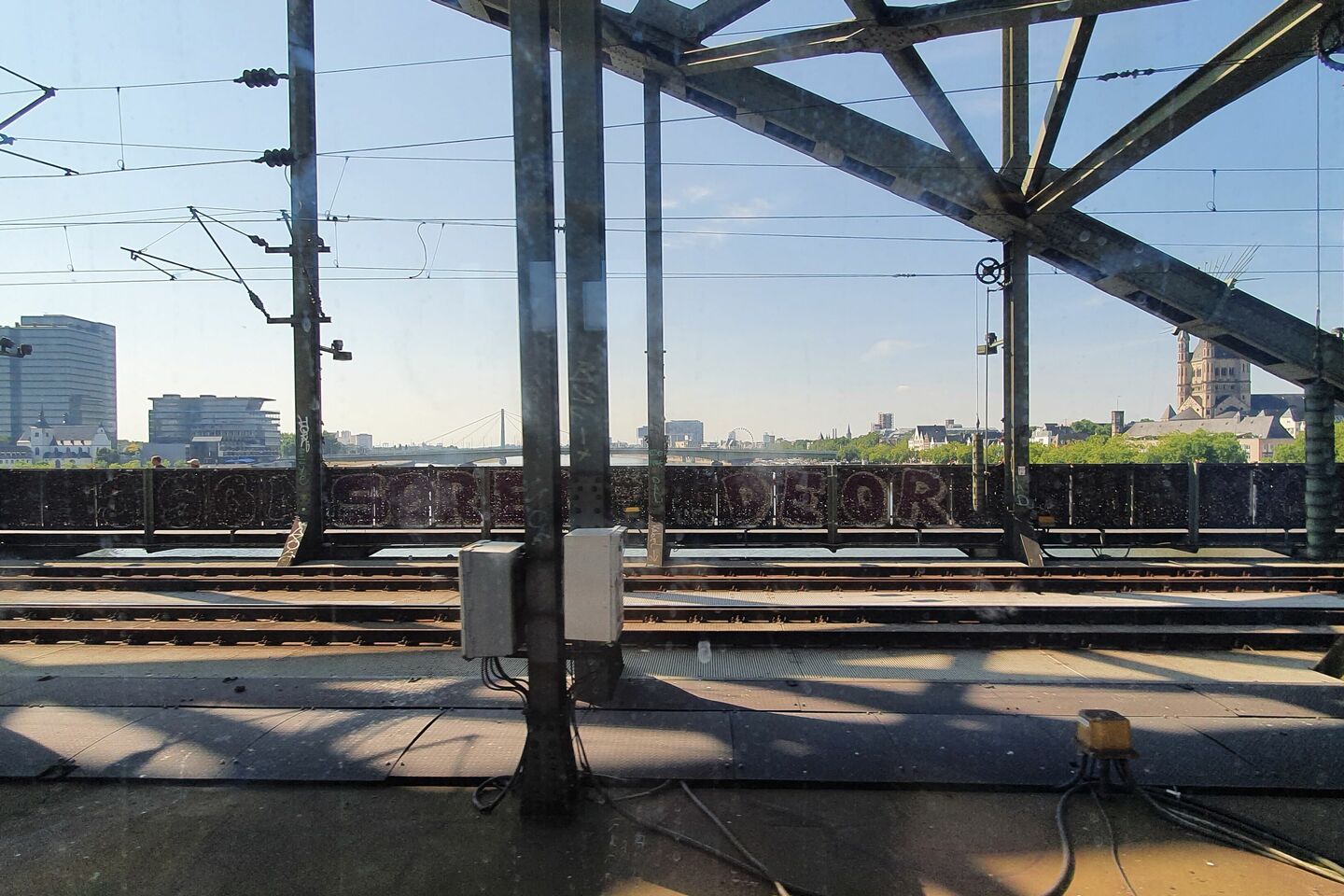
It’s okay to fly to a conference, but why not take the train?
Looking for sustainable travel options
There’s a growing backlash against flying: shouldn’t we reduce air travel and increase the price of airplane tickets? Cursor spoke with two TU/e scientists who work for the Low Carbon Travel Initiative, a group of researchers who aim to inspire their colleagues to consider more sustainable travel options when visiting conferences or international meetings. Cursor was also present at last Saturday’s climate protest at Eindhoven Airport, in which several TU/e students and staff members took part.
The Low Carbon Travel Initiative was launched at TU/e in 2019. A truly bottom-up initiative by researchers who are keen to adopt a more sustainable travel behaviour and who encourage others to do the same. It was founded by PhD candidate Tanja Manders and has now been taken under the wings of, among others, Tessa Leferink and Irene Niet, both of whom work as PhD candidates in the Technology, Innovation and Science (TIS) group at IE&IS.
Leferink spends half her time working on her doctoral research and the other half working as a sustainability mobility advisor. Her research focuses on how travel behaviour and car ownership are affected by residential relocation. “I’ve been focussing on sustainability for ten years now, and that’s why I quickly became interested in this initiative. I noticed when I started to work at TU/e that the university doesn’t have much of a policy on business travel. Our main focus with the Low Carbon Travel Initiative (LCTI) is on business related travel, such as to and from conferences.”
Niet’s research focuses on how artificial intelligence can play a role in the energy transition. “My work covers several fields, which is why I can travel to lots of conferences. That raises the question of how to travel to all those places. It’s important to look for a healthy balance between the many alternatives.”
No sustainable travel policy
The LCTI consists of a core group of five members surrounded by several interested people. “Practically everyone in our research group believes that sustainable travel is important,” Niet says. Looking back on four years of LCTI, would it be fair to say that things have truly changed? “Definitely,” Niet says, “but most of those changes were organized by people themselves. There’s an increased interest in sustainable travel, and people give their colleagues advice. New employees regularly ask us whether the university has a policy in place on this topic, and we have to answer ‘no’ to that question. Setting up such a policy is one of our priorities. There’s nothing about sustainable travel on the university’s website, for example. Every grown-up university has a policy on sustainable travel, ranging from a couple of sentences to a decision tree for business travel. TU/e is the only university without any policy whatsoever.” Leferink: “We are at the bottom of the class; we don’t even pluck the low-hanging fruit”
The University of Utrecht is a good example of how a university can play a pioneering role in this field, with an excellent policy on sustainable travel. You simply need to look up your destination, after which you’ll be presented with the various travel options and travel times by train and airplane, and the differences in carbon emissions. The University of Groningen, too, published a clear policy on its website, which includes a train map, train tool and a decision tree.
Niet believes that professors and other supervisors in a research group should lead by example. “PhD candidates look at what a supervisor does and in part base their decision on that behaviour. But people base their decision on a variety of factors. I can understand when someone decides to travel by airplane when their child performs in a school musical on Friday evening and they have to be at a conference the following morning. You also need to be sustainable when it comes to your private self and your relationships. But someone else might be perfectly able to travel to that same conference by train.”
Leferink believes that it’s important to make haste in setting up a policy, because new employees are the ones who can truly make a difference. “A new job is a life changing event that is known to change people’s behaviour. People are more likely to change their behaviour when they relocate, have children or change jobs. There’s a lot you need to figure out anyway, which makes you prone to doing things differently.”
Niet: “We have instructions on how to use printers, but when it comes to business travels, you have to come up with the right choice by yourself. And visiting a conference already involves a lot of work: booking your trip, finding an accommodation, presenting a paper, networking, et cetera. People automatically opt for the default choice. For many of us, that’s air travel. But that’s not always necessarily the easiest option.”
Other incentives
Leferink knows that TU/e is about to develop a sustainable travel policy after the summer break, but that’s not soon or concrete enough, she believes. “It should encompass more than ‘traveling by train is the most sustainable option.’ One thing you could do is issue the strong advice to take the train for a certain travel time. Broader considerations should also be taken into account, because air travel is often the least expensive option. When you need to pay for your ticket with the money from a project budget, another incentive comes into play. A more expensive train ticket could make it more difficult to attend conferences on a regular basis. With a TU/e-wide budget, those costs would no longer result in fewer development and networking opportunities. This is of particular importance to our younger staff.”
But Leferink remains optimistic: “As of January 2024, every Dutch organization of over 200 employees will be required to monitor their employees’ travel movements, both their business travels and their travels to and from work. TU/e knows about this deadline, so I’m sure it will work as an incentive.”
HR director Mariska Brzözek says in a response: “Following a meeting with vice-president Nicole Ummelen and sustainability ambassador Anna Wieczorek, the steering group Mobility and, subsequently, the working group Mobility was asked to take this topic into account when drafting a vision document as well as a policy and proposals pertaining to the issue of mobility in the context of the strategic goal sustainability; this includes, for example, commuting and business travel. It’s true that this is scheduled for coming fall.”
No anti-flying group
Does the LCTI benefit from the increased media attention for climate issues? Niet: “There are many activist groups in the media. People still need to be able to travel to conferences, and sometimes air travel is the only option, for instance when you have to be in the US. We need to be careful not to turn into an anti-flying group. We’re not against airplanes or flying, we’re in favour of making a careful consideration. That means asking yourself: can I take the train instead? For many of us, air travel remains our default choice.” Leferink adds: “That used to apply to me too for a long time, but that has changed over the years. Change takes time and effort, but a supporting policy and inspiring examples can help with that.”
Tested in Manchester
Leferink and Niet present a nice real-world example of a visit to England during which a comparison was made between air travel and train travel. Niet: “Two groups within our department went to two different conferences, which happened to take place in Manchester at the same time. One group took a plane, the other took the train. Funnily enough, senior employees preferred traveling by airplane, while the junior staff opted for the train. In the end, the travel time from door to door was practically the same. People on the train saved time because they could keep their luggage with them and because they didn’t need to be present at the station hours before departure. People often forget about those extra hours. Those who took the plane also had bad luck that day because their flight was delayed. In the end, the train was the clear winner.”
“People on the train also left behind a much smaller carbon footprint: approximately 43 kilos compared to 320 from those who travelled by airplane.” Leferink: “Yes, you can make a calculation with a factor of about 10. Environmental organization Milieucentraal puts it between 7 and 11. It’s impossible to determine beforehand with a hundred percent certainty because there are several factors that play a role in making that calculation, such as aircraft occupancy, type of aircraft and the electricity mix on the railway track.”
The university’s sustainable travel policy should include an explanatory text on the definition of working hours, Niet says. “Does travel time count as working time? And what if you need to spend more time travelling because you choose the train? Or should you opt for the shortest travel duration for financial reasons?” Leferink: “But then again, it’s easier to work in a train then on an airplane. Whatever you choose, make it explicit. Otherwise, you run the risk that people start to make assumptions.”
Alternatives to airplane travel
If you’re set on travelling to a conference in a more environmentally friendly way but can’t do so by train because that simply isn’t possible or takes too long, do you have any alternatives left? “Certainly,” Leferink says. “Electric carpooling is a good idea. “I recently heard about two groups of people who drove an electric car to an electric loading conference in Scandinavia: civil servants of the municipality of Rotterdam drove an electric van and researchers from my own NEON group (who work on the energy and mobility transition) drove a Tesla. That wasn’t just fun, they also learned a thing or two about the international loading infrastructure along the way.” Now that we’re mentioning electric cars, didn’t TU/e have a couple of these cars on its campus? “The university said goodbye to those cars. They were introduced as a pilot in 2019, but they were hardly used during the Covid-19 pandemic, which is why the initiative was terminated.”
Tips on how to change your mode of transportation
Would you like to swap planes for trains or some other sustainable mode of transportation? Leferink and Niet have a couple of tips for you. Ordering tickets via Deutsche Bahn, for example, is much cheaper than via NS Highspeed. They wrote a blog featuring the most important tips & tricks. They also have a couple of links to handy tools that can help you calculate the most environmentally friendly modes of transportation.
There’s a willingness
Leferink and Niet want to emphasize that sustainability doesn’t apply exclusively to mobility. Niet: “You always need to think of people. A person’s private life shouldn’t suffer from a much longer train journey. We’re not going to encourage people to sit on a train for eighteen hours, that won’t help anyone. But there is the option of booking an overnight stay.” Leferink has done so in the past. “I took the night train to a conference in Milan, but it got cancelled, so I had to spend the night somewhere. That was unforeseen, but I could book an overnight stay on purpose. That also creates a moment of rest on your way to a conference.” Niet: “And that leads to more available seats on a train. We want to entice and inspire people, not force them. That’s important to us.”
Remco Tuinier, professor of Physical Chemistry – not part of the LCTI – tries to be conscious of sustainable travel and to set an example in his own group. Tuinier: “Ideally, you shouldn’t just look at the choice of destination, but at the frequency as well. Attending conferences and presenting lectures is an essential part of a scientist’s work. But how often do you visit a conference, and how far do you travel? I myself regularly travel to Switzerland and France for my work and always take the train. It’s easy for me to work on manuscripts in a train, to do some theory work, or to read and comment on thesis chapters. I’m going to travel to Naples for a conference in September. I’m still not sure whether I’ll travel by train or airplane.”
Leferink thinks that people want to change and that access to information and clear guidelines on a topic can help. Niet agrees with her: “In the current situation, employees need to discuss the matter with their managers: am I allowed to take the train? Even if it’s more expensive? It would be great if that would no longer be necessary in the future because the university has a clear policy that stimulates sustainable travel.” Leferink: “If we say that we as a university take sustainability seriously, then we should also think about the carbon footprint we leave behind when we travel.”
Climate protest Eindhoven Airport
The climate protest at Eindhoven Airport on Saturday 25 March was threefold: demonstrators protested on the square in front of the terminal, in front of the Aviation Centre, and at the private jet terminal. The protests focussed primarily on the private flights accommodated by Eindhoven Airport, and on the airport’s invalid environmental permit. Cursor tagged along with both the members of the scientific staff, who had untied under the flag of Scientist Rebellion, and a number of Extinction Rebellion protesters.
The scientists, mostly dressed in lab coats, left the TU/e terrain for Eindhoven Airport on a bicycle. After they arrived at the Aviation Centre, one of the protesters held a speech: “Flying is one of the most carbon intensive activities, and private jets in particular. They are ten times more carbon intensive than airliners, and fifty times more than trains (per capita, ed.). They also don’t pay any tax on their fuel, unlike people who drive cars. In addition, Eindhoven Airport still doesn’t have an environmental permit, while the aviation industry continues to emit nitrogen. We want Eindhoven Airport to return to the number of aircraft movements of 1994 as long as their environmental permit is invalid. We also want a ban on short-distance flights to London, for example, and on private jets.”
Press denied access
Cursor was also present at the demonstration against private flights, but was instantly denied access to the terrain by the RoyalMarechaussee, despite a valid police press card. A fence was found via a detour behind which several protesters were located. Some journalists were eventually allowed access to the terrain where the protesters demonstrated, while others were not.The Marechaussee referred journalists who disagreed to their spokespersons, but they didn’t answer their phones.
Well trained
Prior to the climate protest, Cursor visited a training by members of Extinction Rebellion. How do they prepare for a demonstration like this one? And what is violence? XR members talk about a lot of things and want to hear each other’s opinions so that everyone who takes part understands and agrees with the protest consensus. They also learn about their rights and are told to prepare for a possible police intervention.

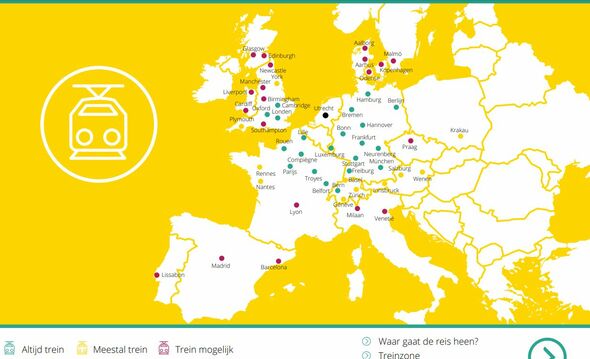
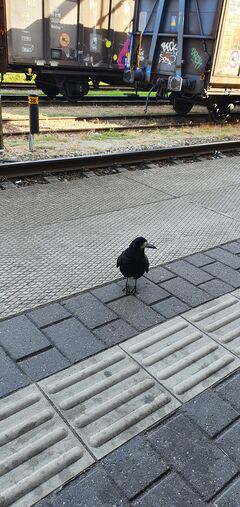
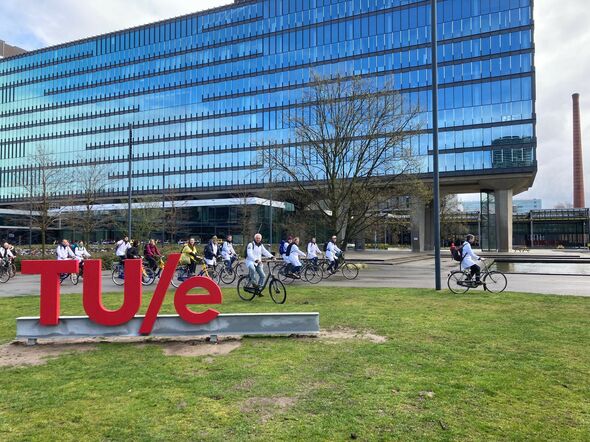
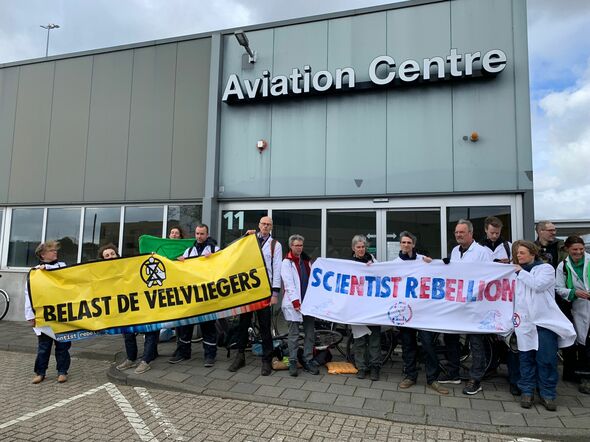
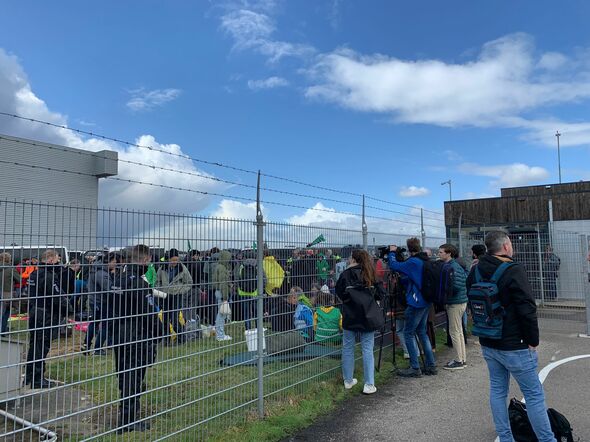
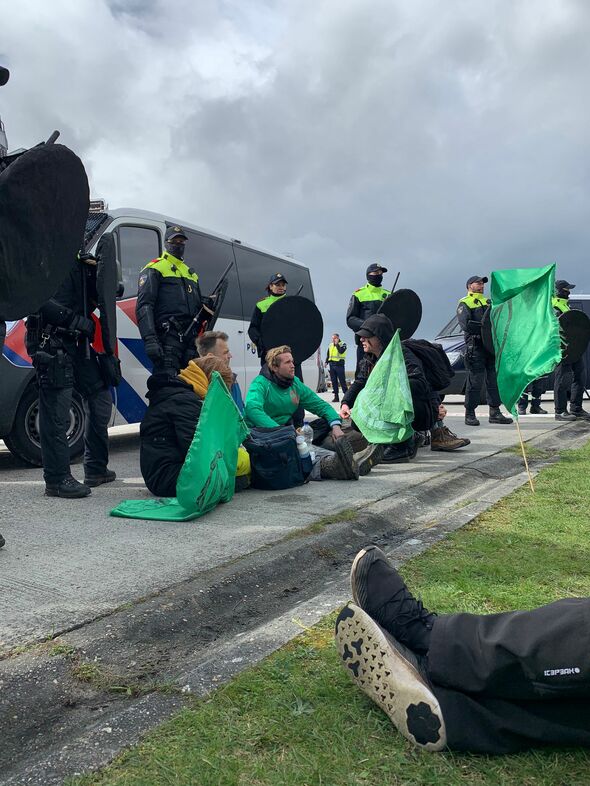

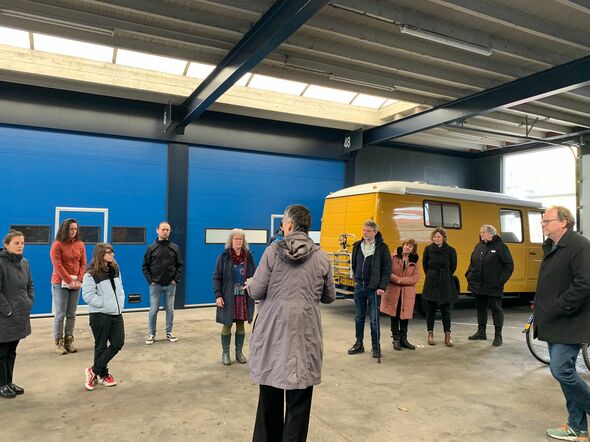
Discussion